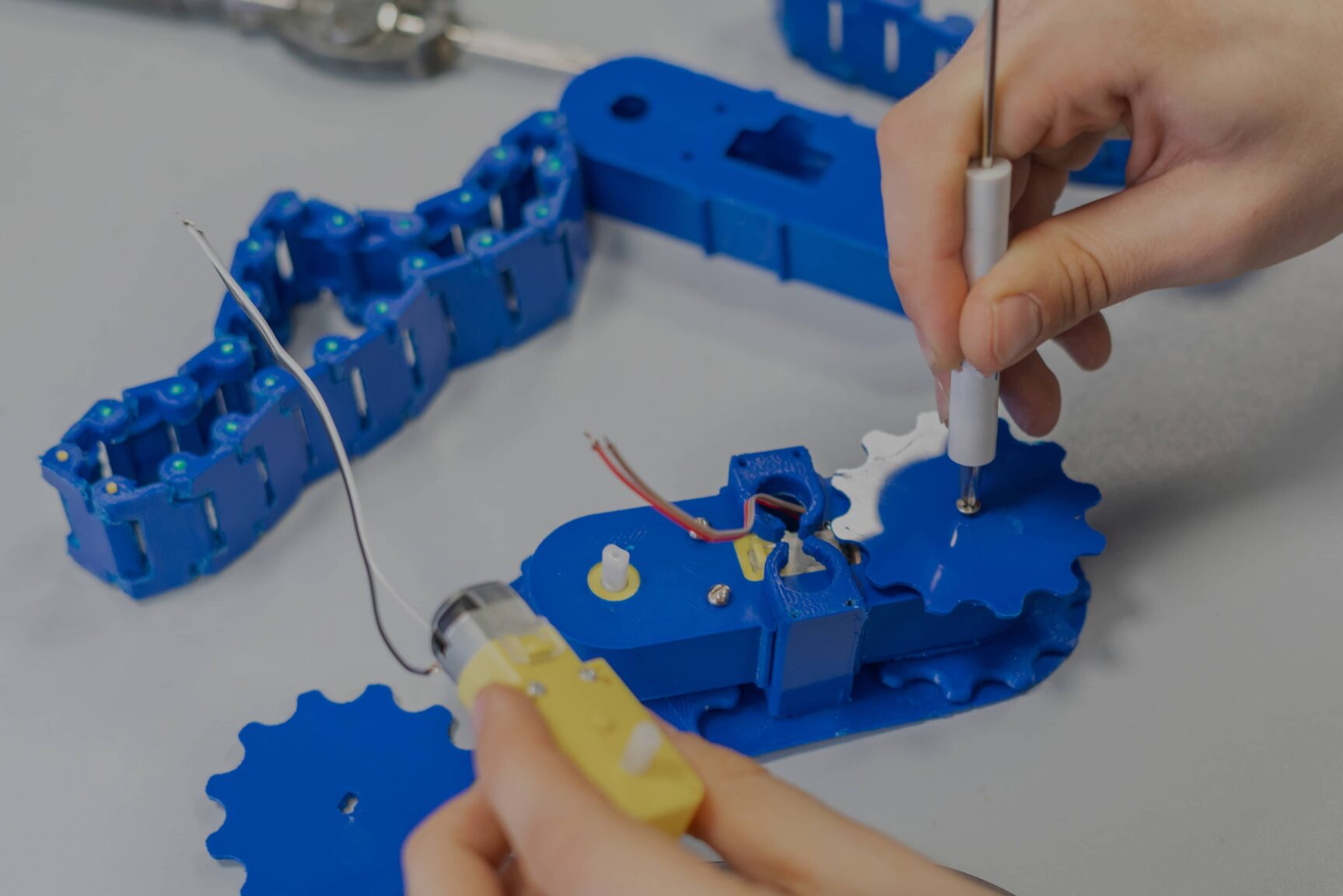

Originally published on fastradius.com on February 15, 2021
While some product teams specialize in producing large volumes of simple, single-component parts, many develop parts that will feed into a larger assembly. Whether it’s for something as simple as a pen or as large or complex as electronics or automotive chassis, the practice of designing for assembly (DFA) — or designing for manufacturing and assembly (DFMA) — ensures individual components of the assembly come together in an efficient and cost effective way.
Leveraging these benefits to their fullest effect means that you’ll need to follow DFA best practices when designing for multi-part assemblies, which can reduce process redundancies, prototyping and testing phases, and more. Here are a few proven ways to streamline component assembly design.
Assembly designs comprising two unique components can often be redesigned into a more efficient pair of identical parts. Take a gear housing assembly, for instance. While your first inclination might be to put the bolt holes in the first piece and threaded bosses in the second, creating one component with an equal distribution of holes and bosses that fits into itself when mirrored can dramatically reduce assembly costs.
Distributing the fasteners creates symmetry, which eliminates both the need to reorient parts during assembly and the need for a second mold — essentially cutting tooling expenses in half. Family molds, or those that allow multiple parts of the same material to be made using the same mold and shot, are another way to improve operational efficiency and streamline the assembly process.
Even strategically designed symmetrical parts can be a pain to assemble, depending on the number of inserts, screws, and washers involved. Then there’s the matter of determining which fastening processes can be automated and which must be performed manually — it all becomes complex very quickly.
A more efficient option is to exchange the nuts and bolts for a system of mating clips, hooks, and snap fits that can be incorporated directly into design. This further reduces the need for additional hardware and streamlines the actual assembly process. In some instances, you might even be able to 3D print living hinges using powder-based processes like HP MJF or SLS.
Overmolding allows you to mold two or more components directly onto each other — creating a permanent bond between the materials and bypassing the need to optimize product design for manual assembly.
The technique is commonly used to apply ergonomic grips onto hand tools and to mold silicone rubber gaskets directly into a wide range of devices. The threaded inserts from the gear housing example above can also be molded directly into your assembly components, further simplifying their design and making them that much faster to put together.
This may seem obvious, but unless it’s absolutely necessary for a particular part, it’s best to avoid getting bogged down with designing and fabricating your own screws, nuts, pins, shafts, and all the other components you can easily purchase in standard off-the-shelf sizes. Standard hardware is especially important if you anticipate increases in production volume.
Plastics like polypropylene (PP) and styrene butadiene (SB) make excellent living hinges because of their elasticity and high durability. Examining assembly designs for other components that could benefit from similar performance characteristics is one way to strategically streamline your assemblies while keeping your bill of materials as simple as possible.
In some cases, this approach allows complex assemblies to be refined down to a single piece. In fact, many metal parts are being replaced with plastic components that can be molded directly with their mating components. These assemblies are often lighter in weight but offer comparable mechanical characteristics and performance.
If you’re finding that multi-part assemblies are giving you trouble when it comes to finding the right balance of cost efficiency, speed, and ease of assembly, it might be time to reexamine your approach.
The good news is that partnering with the right manufacturing team can significantly ease the burden of multi-part assembly design. At SyBridge, we’re committed to rethinking manufacturing. From the materials we source to the processes we use, we believe in combining traditional with cutting edge to achieve new and remarkable things.
Our team of experienced engineers, designers, and technologists work hand-in-hand with every customer from ideation and design to production and fulfillment, ensuring that every part of the product development process is optimized for speed, cost, and quality. Contact us today to find out how we can elevate your designs, speed your time-to-market, and reduce your production costs.
Forget typical cycle times. We're pushing the boundaries of conformal cooling. While traditional approaches deliver…
Forget typical cycle times. We're pushing the boundaries of conformal cooling. While traditional approaches deliver…
From left to right: Brayden Janak (apprentice); Logan Vifaquain (CNC machining, Programming and CMM); Ron…
SyBridge Technologies is proud to announce we have been awarded the 2023 General Motors Supplier…
Today, designers and engineers are accustomed to working with digital tools in their day-to-day jobs.…
Optimizing Your Injection Molding Process for Cost-Effective Manufacturing Excellence In today’s competitive landscape, manufacturers are…